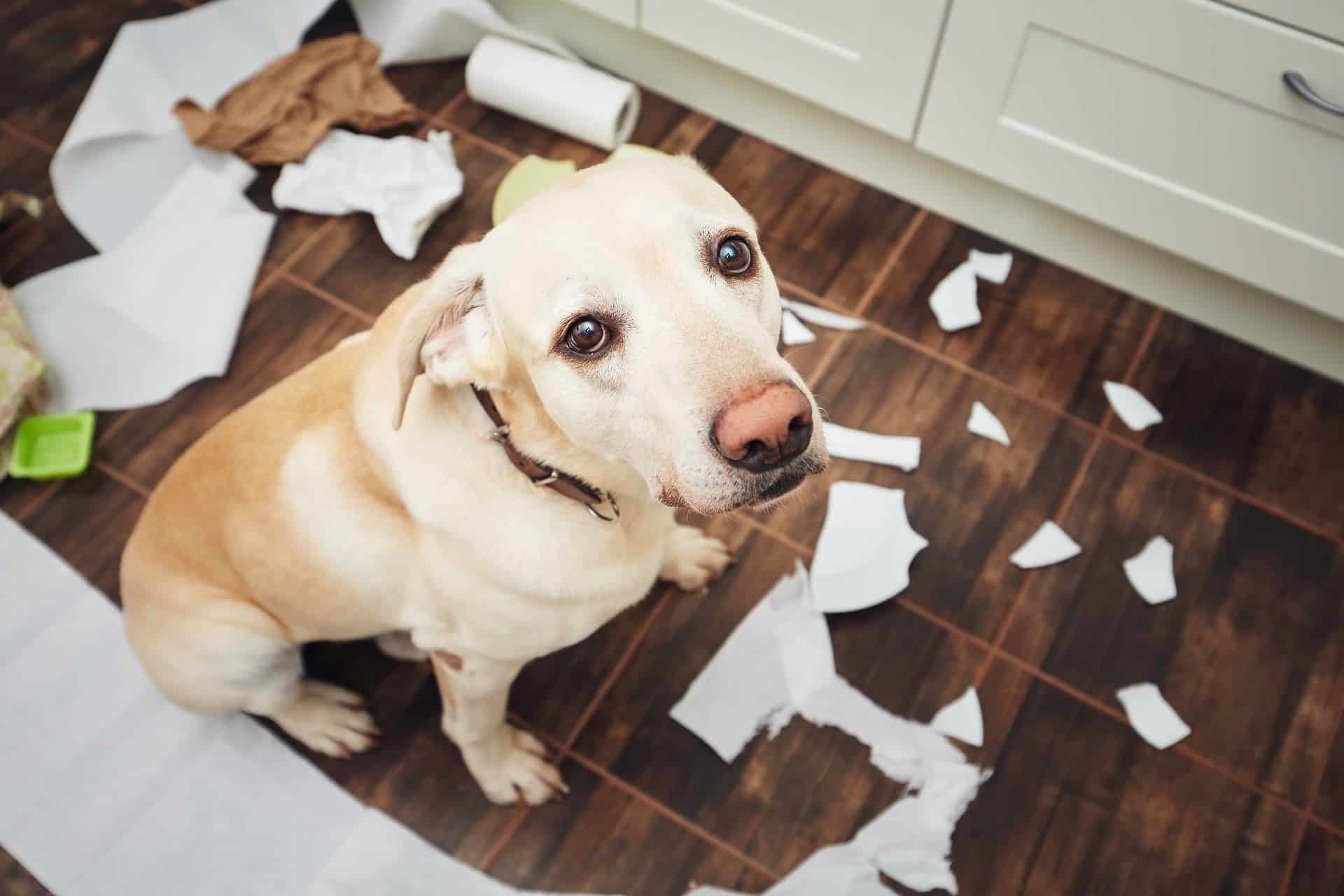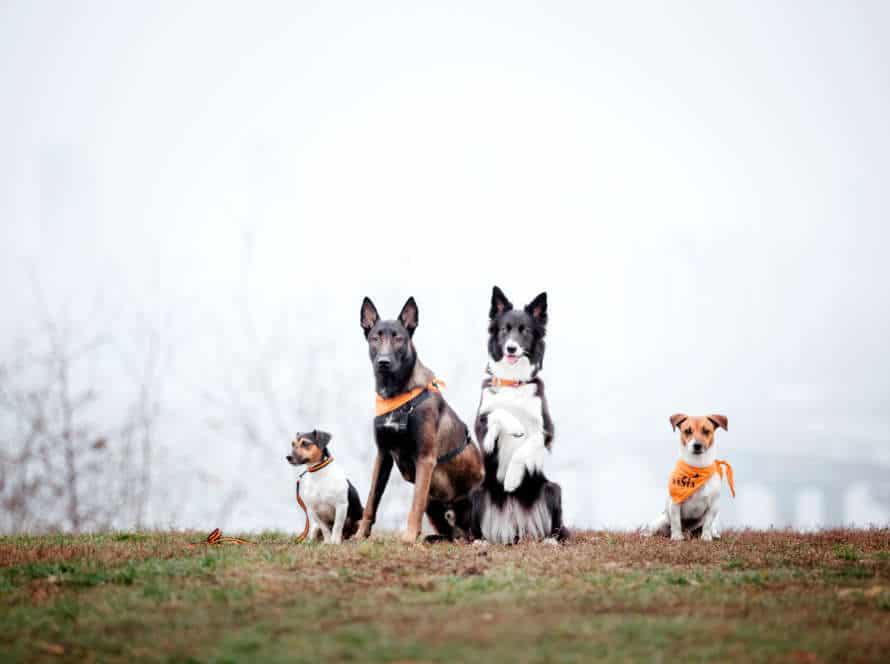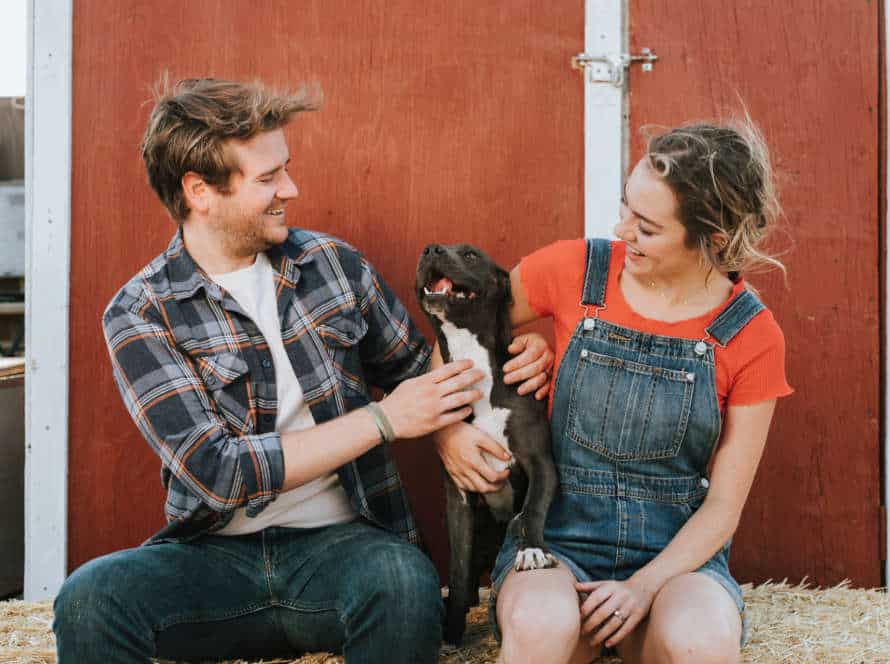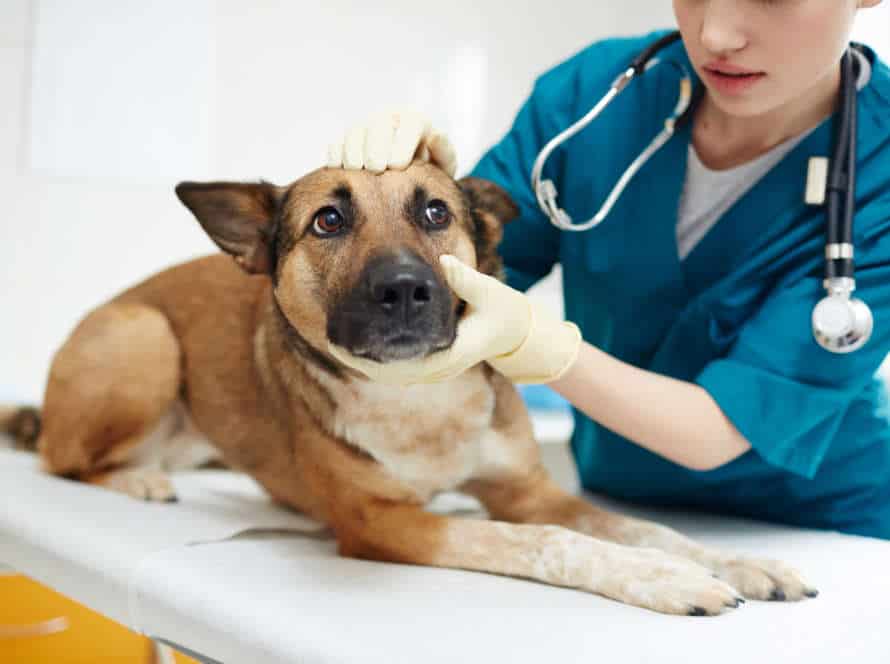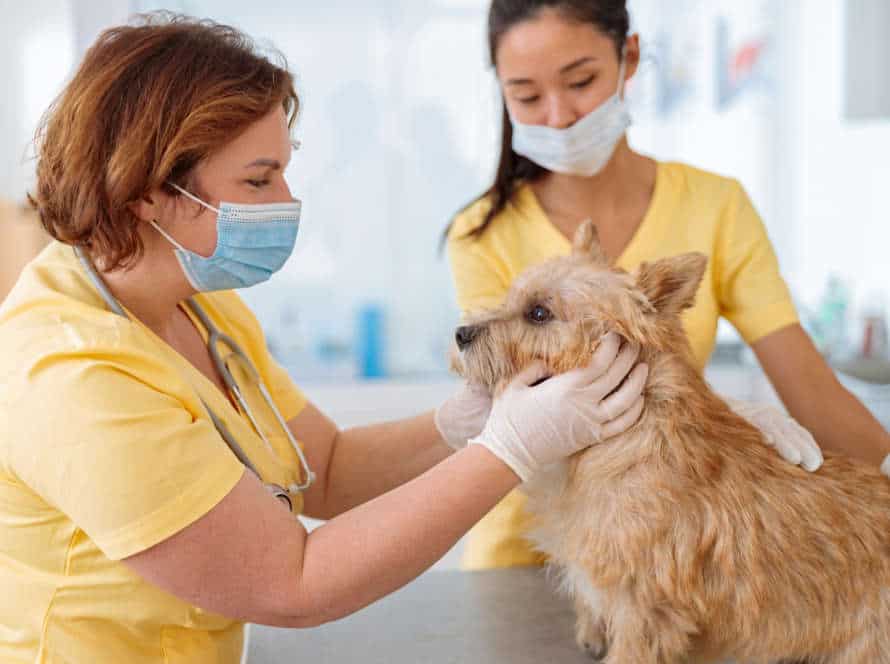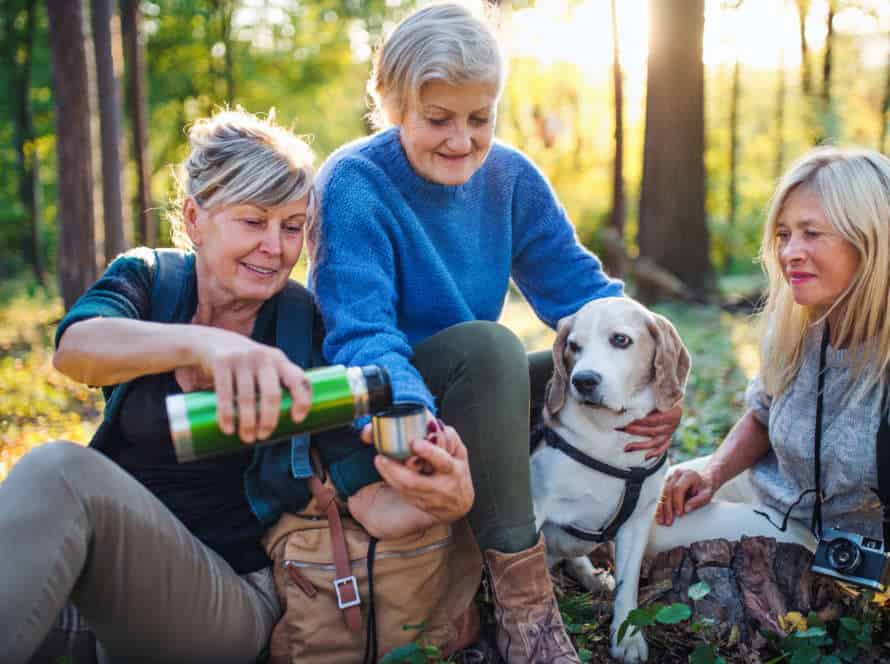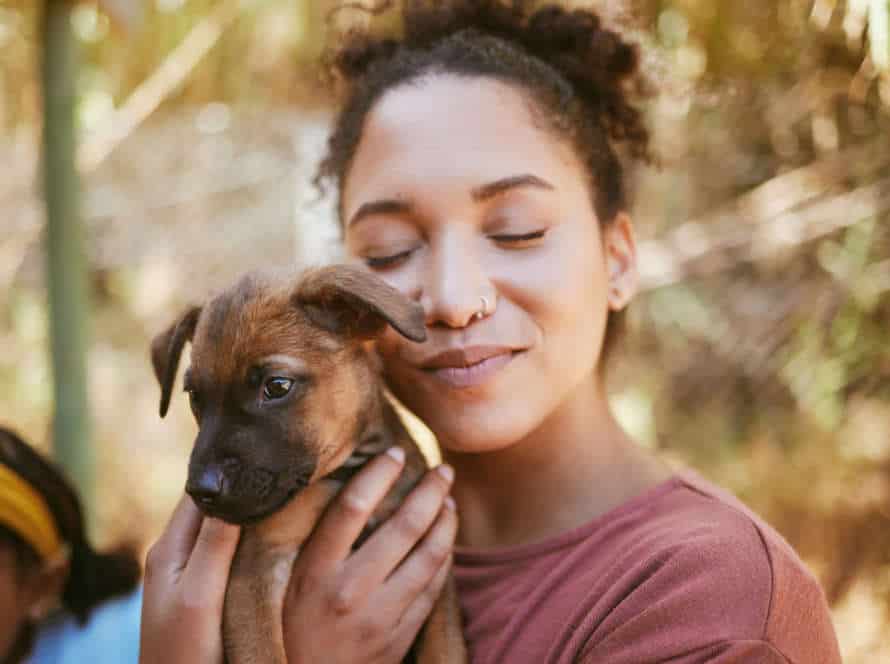The Top 10 Dog-Proofing Tips for a Safe Home
Bringing home a new furry friend can be thrilling! But, it’s essential to make sure both your pup and your dwelling are secure. Here are the top 10 dog-proofing tips for a safe home:
- Secure trash cans and pantry doors so your pup can’t access human food or hazardous materials.
- Keep electrical cords up high or use cord protectors to prevent chewing.
- Cover any open toilets to stop your pup from drinking harmful cleaning chemicals.
- Install baby gates or pet barriers to keep your pup in designated areas.
- Keep medications and supplements out of reach.
- Put non-slip mats in slippery areas to prevent slips and falls.
- Store cleaning products up high and use pet-safe cleaners.
- Keep breakable items and valuables off low shelves and tables.
- Remove any poisonous plants from your home or place them out of reach.
- Put away any small objects that could be a choking hazard.
By following these tips, you can create a happy and secure abode for your furry companion.
General Safety Tips
Safety for your pup? Number one on the list! Dog-proofing is the way to go, to minimize the risks that could harm your pup. So, here’s how to do it…
Make some small changes, or larger ones too. Keep your pup safe and sound, with these tips for dog-proofing your home!
Secure Cabinets and Drawers
Securing cabinets and drawers in your home is key for a safe environment for your pup.
Here are a few ways to do this:
- Use child-proof locks – Put them on cabinets and drawers to keep your pup away from dangerous substances like cleaning agents, meds, and other toxins.
- Restrain loose cords and wires – Keep electrical cords, strings, and wires away from your pup to avoid choking or electrocution.
- Keep trash cans closed – Your pup should not have access to what might be hazardous materials.
- Avoid small items especially in the kitchen or dining room – Rubber bands, paper clips, twist ties, and other small objects should be kept away from your pup, as they can be a choking hazard.
- Ensure a tidy environment – Cluttered areas can cause your pup to trip, and dirty or wet floors can lead to sickness.
These steps and more can help create a safe home for your furry friend, while minimizing any negative impacts on the environment.
Use Baby Gates
Baby gates are great for keeping your pup safe! Here’s how you can use them:
- Block off stairs to avoid falls and climbs.
- Stop your dog from entering rooms with harmful items such as cleaning supplies, meds, or sharp objects.
- Set up a play area with baby gates if you need to contain them.
- Get gates that are sturdy and tall enough for your pup.
- Consider pet gates with doors for easy passage.
Remember, baby gates are just one part of keeping your dog safe – always use other measures too!
Check Indoor and Outdoor Plants
To keep a home safe for dogs, here are the top 10 dog-proofing tips:
- Check plants, both indoors and outdoors, for toxicity to pets. Some common houseplants, like lilies and aloe vera, may be harmful if swallowed.
For checking plants:
- Make a list of your indoor/outdoor plants and research if they are toxic to dogs.
- Put toxic plants out of reach or get rid of them.
- Use pet-friendly alternatives, like spider plants or bamboo, that are safe for dogs.
- If you think your dog has ingested a toxic plant, contact a vet straight away. Early diagnosis and treatment can help save their life.
By following these safety tips, you can create a happy and healthy environment for both your dog and plants.
Kitchen Safety Tips
Dog-proofing your home? Kitchen is a must! Utensils can be dangerous, and there’s yummy food. So, it’s key to secure your kitchen for your furry friends. Here are some top tips to help you out:
Secure Trash Cans
Securing your trash cans is essential to protect your pup and keep your kitchen neat. Here are a few tips:
- Get a lid that snaps close tightly to stop your pup from getting in.
- Use a foot pedal for hands-free operation to stop your pup pushing the lid open.
- Place the can under the sink or in a closed cabinet, out of reach.
- Use a bungee cord or a lid lock to hold the lid in place and stop access.
- Sprinkle cayenne pepper or other deterrents on top to stop your dog rummaging.
Remember, spoiled food or objects from the trash can be dangerous for your pet. So, take action to keep them safe.
Avoid Leaving Food on Countertops
Leaving food on countertops is a mistake that can attract pets, like dogs, to your kitchen. To keep your pets safe, here’s what you can do:
- Store leftovers in airtight containers and put them in the fridge or freezer.
- Clean kitchen surfaces with a good cleaner often.
- Put trash or food scraps in a sealed bin or compost, away from your pets.
By being mindful of where you leave food and taking preventive measures, you can avoid your pets eating something bad and make sure your home is safe for them.
Keep Hazardous Items Off Your Dog’s Reach
As a responsible pet owner, it’s key to keep risky items away from your pup. Here are the top 10 tips for dog-proofing your kitchen:
- Lock away all meds, vitamins, and supplements.
- Cleaning products, such as detergents and bleach, in locking cabinets.
- Secure trash cans with lids or tuck them away in cabinets.
- Keep sharp objects, like knives and scissors, locked up.
- Store food items, like chocolate, grapes, raisins, and onions, out of reach in pantry or locking cabinet.
- Plants and flowers should be away from pup’s reach, as some can be toxic.
- Secure any electrical cords, to prevent electrocution.
- Place child safety latches on low cabinets and drawers.
- Trash bags and recycling bins in latching cabinet.
- Hang cooking tools, like spatulas, wooden spoons, and pot holders, or lock in drawer.
Reminder: Check your home regularly for any new hazards or dangers to ensure a safe living environment for your pup!
Living Room Safety Tips
Living room safety for your pup? Here’s what you need to know!
- Keep cords and wires out of reach.
- Make sure furniture is safe for Fido.
Here are the top tips for dog-proofing your living room. Let’s take a look!
Store Electrical Cords Safely
Living room safety is important. Here are tips to remember:
- Use surge protectors to protect electronics and prevent electrical fires.
- Keep cords away from pets and kids with covers or by hiding them behind furniture.
- Don’t run cords under carpets or rugs.
- Throw away or repair any frayed, damaged or exposed wires.
- Use cord clips to avoid tangles.
- Unplug unused cords, especially those connected to space heaters and lamps.
- Follow manufacturer instructions and safety guidelines for all electrical devices.
These precautions can help protect against electrical fires, electrocutions and other hazards.
Keep Fragile Items Out Of Reach
When it comes to your furry friend’s safety in the living room, it’s vital to keep delicate items out of their reach. This way, you’ll not only safeguard your possessions, but also protect your pup from harm or ingesting hazardous objects.
Here are some recommendations for keeping fragile things away:
- Put breakable stuff on higher shelves or secure cabinets.
- Avoid glass objects in the living room, or switch them with plastic or metal versions.
- Be sure your TV or electronics can’t be knocked over by your pup.
- Keep candles and any open flames far from them, or use flameless candles instead.
By following these tips, you can create a safe environment for your doggo while also safeguarding your belongings.
Invest In Robust Furniture
Investing in robust furniture is a must for a safe and comfortable living space for you and your furry pal. When picking furniture, it’s important to think about its durability, stability, and safety features. Here are a few tips for choosing the right pieces:
- Look for sturdy construction. Furniture made from solid wood or metal usually lasts longer than those from composite materials.
- Think about a slipcover. If your dog sheds or drools, purchase furniture with removable and washable slipcovers.
- Pay attention to legs. Choose furniture with legs that are strong enough to take your pet’s weight without tipping over or collapsing.
- Avoid sharp edges and corners. Rounded edges and corners are safer for both of you, reducing the risk of getting hurt.
Pro Tip: Get a high-quality dog bed or crate to give your furry friend an area to rest and sleep, and reduce the risk of damage to your furniture.
Bathroom Safety Tips
Dog-proof your bathroom by taking some important steps! Store all cleaning products high up, out of reach. Pets can be harmed by toxins in these items. Close all cabinets and drawers securely. A curious pet won’t be able to open them. Install baby latches on cabinet doors. And get a non-slip mat for your tub or shower. These tips will help keep your pup safe in the bathroom.
Store Medications Securely
Securing meds is a must for a secure home, especially when pets are around. Here are ways to store them properly:
- Keep meds in a high, locked cabinet that’s beyond reach of kids and pets.
- Store in original packaging with labels and instructions.
- Don’t leave them on counters or tables where pets can get to them.
- Dispose of expired/unused meds according to local rules.
- Keep track of meds and expiry dates.
- Keep meds away from heat, moisture and sunlight.
- Keep a list of emergency contacts nearby (including vet and pet poison control).
- Never mix human and pet meds to avoid confusion.
- Educate yourself about the effects on pets and talk to the vet.
- Keep meds away during doses to avoid spillage or pet ingestion.
By following these tips you’ll make your home safe for you and your furry friends.
Pro tip: Get a pet proofing kit with locks for cabinets and drawers to keep hazardous items away from pets.
Keep Toilet Lids Closed
A basic, yet very important safety tip: always keep toilet lids closed!
Dogs are naturally curious. They can be drawn to the smell or flavor of the toilet water, which could contain dangerous bacteria or cleaning products. These can be dangerous to their health. Also, dogs may fall into the toilet bowl, resulting in drowning or fatal injuries.
By keeping the toilet lids closed, these accidents can be avoided and your furry companion can be kept safe in the restroom.
Invest In Dog-Friendly Bath Mats
Investing in dog-friendly bath mats is a smart and simple way to keep bathrooms safe. Why? Dogs, especially older ones and those with mobility issues, may have trouble on slippery surfaces such as tile or slick flooring in bathrooms. Bath mats can reduce the risk of slipping and sliding on wet surfaces. Get mats with a non-slip, rubber backing for maximum security. Plus, choose quick-drying and machine washable mats for easy cleanup. Pet owners can be sure their furry friends are safe from dangerous falls in the home with these affordable mats.
Bedroom Safety Tips
Keep your home safe from your pup? Start with your bedroom! Here’re 10 tips to dog-proof it. Provide a resting spot for your pup. Avoid certain types of bedding. These tips will help make sure your bedroom stays hazard-free. Happy environment, both for you and your pet!
Secure Your Hamper
Securing your hamper is essential for bedroom safety – especially if you have a pup! Dirty clothes in reach may be chewed on, or worse, swallowed. Here are the top 3 tips for keeping your hamper safe:
- Use a lid or cover: Choose a hamper with a lid or cover, to keep clothes out of reach and away from pup-access.
- Hide it in a closet or cupboard: Store your hamper in a closet, cupboard, or laundry room with a secure door.
- Invest in a pet-proof hamper: If your pup is particularly mischievous, get a pet-proof hamper with a locking or sealing mechanism.
Following these tips will ensure your hamper and clothes are safe from your furry friend’s paws!
Store Jewelry and Accessories Away
Homeowners with dogs must store jewelry and accessories away for safety. Dogs may swallow or choke on small items if left within their reach. Here’s how to store jewelry and accessories safely:
- Keep them out of reach — Store in drawers, cabinets, or high shelves.
- Use storage containers — Put jewelry and accessories in lidded boxes.
- Don’t leave items lying around — This increases the risk of your dog swallowing or choking on them.
- Regularly tidy up — Make sure everything is safely stored away by tidying up your jewelry and accessory storage space regularly.
By following these tips, you can protect your furry friend and keep your jewelry and accessories secure.
Keep your Dog off your Bed
It’s essential to keep your dog off your bed to have a clean and cozy sleep environment. Plus, this will keep your pup safe to avoid accidents or injuries. Here are tips to do that:
- Get a comfy pet bed that your dog will love.
- Reward them with treats when they sleep in their bed and use positive reinforcement.
- Designate another room in your house as a pet-friendly space for your pup to play and rest.
- Use baby gates and closed doors to limit access to your bedroom.
- Wash their bedding, toys, and grooming supplies regularly to keep a healthy home.
By following these tips, you can set boundaries and create a healthy living place for both you and your pup.
Home Entrances and Exits
Keep your pup safe! Secure the entrances and exits of your home. Lock all doorways and use dog gates. Baby gates at the entrance can help prevent your pup from running out when you open the door. Protect your home too! Get an alarm system or security cameras to ensure your home is secure.
Teach your Dog Proper Door Manners
Getting your pup to act right around the door is essential for a safe and relaxed home life. Here are some ideas to make sure they learn proper door habits:
- Train them to sit and stay before you open the door.
- Use a leash for better control and to stop them bolting out of the door.
- No rewards when they jump or scratch at the door.
- Install a dog gate or screen door to stop them getting out.
- Teach them to wait for your cue, not rush out.
- Give them a spot away from the door when you answer it.
- Use treats and praise for good door behaviour.
- Practice door manners regularly so they understand.
- Always supervise them at entries and exits.
- If it’s a problem, get help from a dog trainer or behaviourist.
Secure Bolts and Locks
To keep your pup safe, secure bolts and locks on windows and doors. Here are some tips:
- Install quality locks that your dog can’t break.
- Deadbolts are great for extra protection.
- A pet door or baby gate can restrict access.
- Close and lock doors/windows when leaving or sleeping.
- Train your pup to wait before going in or out.
- Watch them to make sure they don’t chew/scratch locks.
By following these tips, your dog will have a safe and loving home.
Ensure Safe Outdoor Playtime.
If you’re a dog owner, keeping your pup safe during outdoor activities is key for their wellbeing. Home entrances and exits are often the most dangerous areas for your pets, so here are our top ten tips to make sure your furry friend is safe:
- Put child-proof locks on low cabinets.
- Keep cleaning supplies away from the pup.
- Place medications on high shelves or lock them away.
- Ensure windows and doors are securely screened and latched.
- Cover up and secure any exposed electrical cords or wires.
- Put trash cans and composters behind closed doors.
- Store fertilizers, pesticides, and herbicides in unreachable places.
- Install secure fencing and make sure all gates are shut.
- Give shade and fresh water outside.
- Keep poisonous plants out of paw’s reach.
By following these steps, you can create a safe home for your pet and enjoy outdoor playtime without worrying!
Frequently Asked Questions
Q: What are some common household items that can be dangerous for dogs?
A: Some examples include chocolate, grapes and raisins, Xylitol (found in sugar-free gum and candy), medications, and cleaning supplies.
Q: How can I prevent my dog from getting into dangerous substances?
A: Keep all hazardous items out of reach, such as in locked cabinets or high up on shelves. Supervise your dog when they are exploring new areas of the house and discourage them from chewing on inappropriate objects.
Q: What should I do if my dog accidentally ingests something harmful?
A: Contact your veterinarian or an emergency animal hospital immediately. Bring the container or package of the substance with you to the vet.
Q: How can I keep my dog from chewing on electrical cords?
A: Use cord covers or keep cords out of reach. Bitter apple spray can also be applied to cords to discourage chewing.
Q: What are some tips for making sure my dog is safe outside?
A: Always supervise your dog when they are outside, make sure your fence is secure, and avoid leaving your dog outside for extended periods of time in extreme weather conditions.
Q: How can I make sure my home is safe for my dog when I’m not there?
A: Use baby gates to block off areas where hazardous items are within reach, make sure all windows and doors are secure, and consider crate training your dog to keep them safe and contained when you’re not home.

